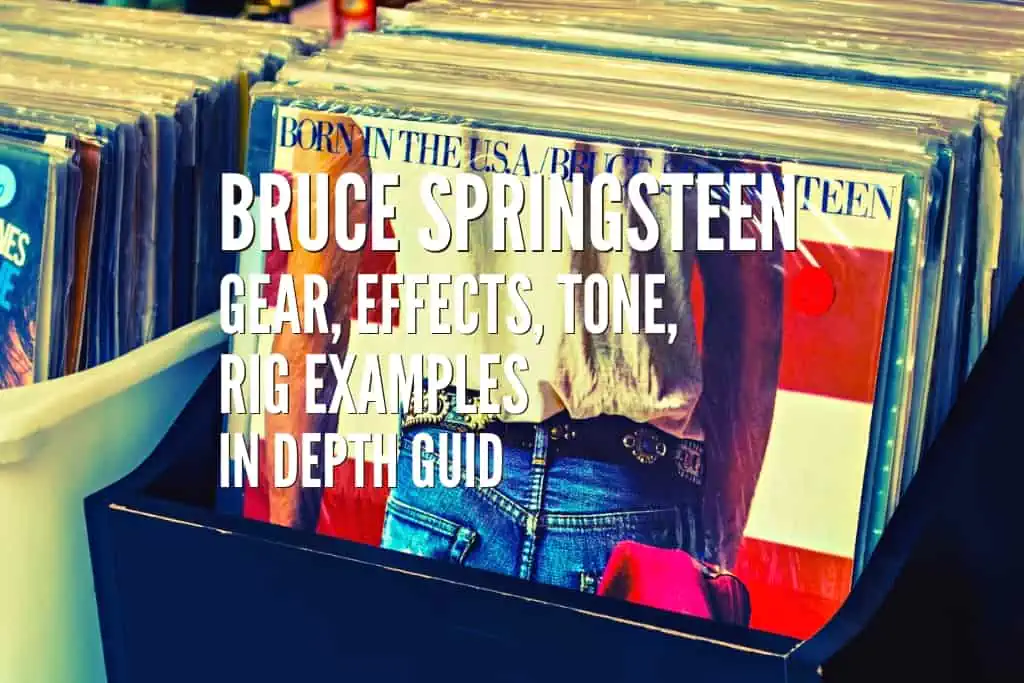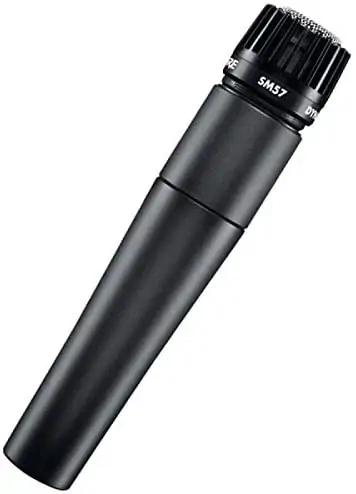Bruce Springsteen is, without a doubt, one of the most iconic rock stars in music history. With his famous albums like Born in the USA and Tunnel of Love as well as his works with Asbury Park’s favorite band, The E Street Band, he inspired many people spanning generations.
His tone evolved through the years with different effects and gears, arriving at the signature Springsteen sound. At the beginning of his career, Bruce Springsteen was using some gear that was considered cutting-edge at the time. He had a 1958 Fender Telecaster with unique customizations with a Fender Twin amp. Later he went on with different gear like Les Pauls and different Gibson and Fender models. He likes Boss pedals and Mesa Boogie amps, along with Fender amps.
Springsteen experimented a lot with different guitars and effect combinations. Especially in the late ’70s, he even tried out Stratocasters. But his tone was always that unique, with a great balance between an edgy rock sound and a mellow, bluesy atmosphere. He liked to have some effects in his tone, too, like overdrives, flangers, delays, rotary speakers, and so on.
Guitars
Acoustic Guitars
Takamine EF341C Guitar
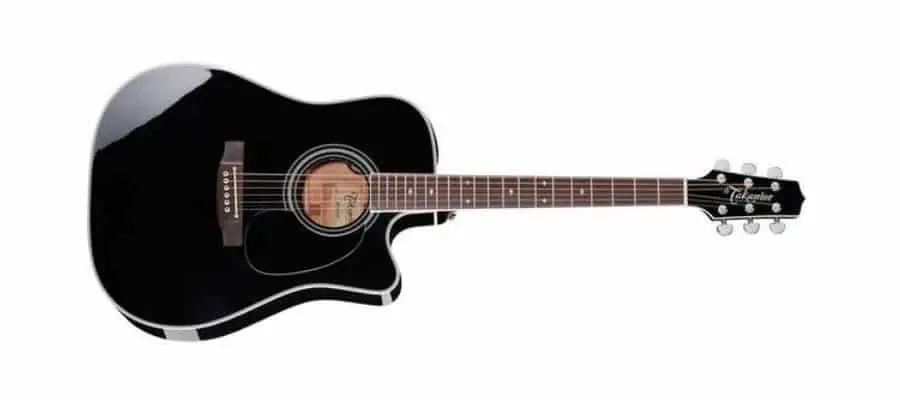

One of the first acoustic guitar choices of Bruce Springsteen is the Takamine EF341C Guitar. He used it mainly in live performances in the second half of his career.
Takamine P6N
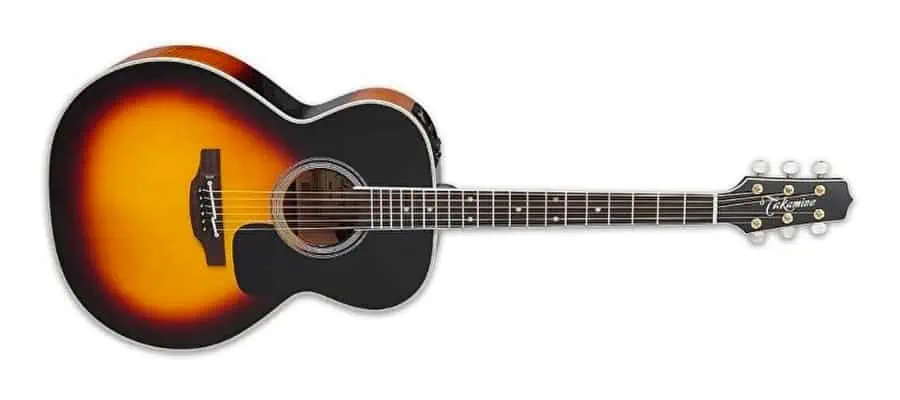

Takamine P6N is another acoustic guitar Springsteen used in some concerts. The guitar is shown as one of Bruce’s favorite guitars on the official Takamine website.
Gibson J-200
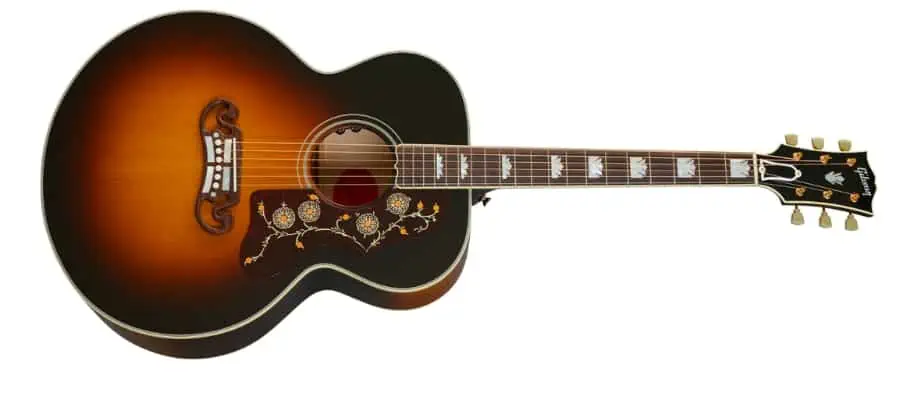
One of the acoustic guitars that became a synonym for Bruce Springsteen is the Gibson J-200. The guitar can be heard in many recordings and can be seen in many shows in Springsteen’s half-a-decade career.
Gibson J-45
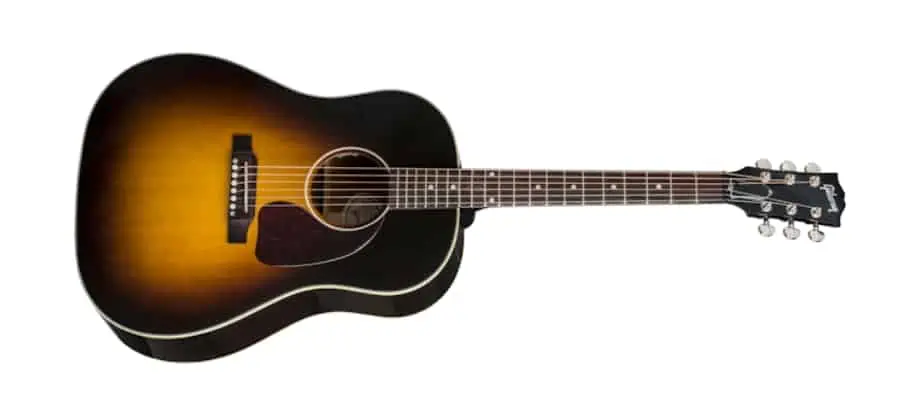
Another guitar Bruce used for a while in his studio is the Gibson J-45 acoustic guitar. He used it mainly in the studio for jamming and practice sessions.
Takamine EF381C 12-String Guitar
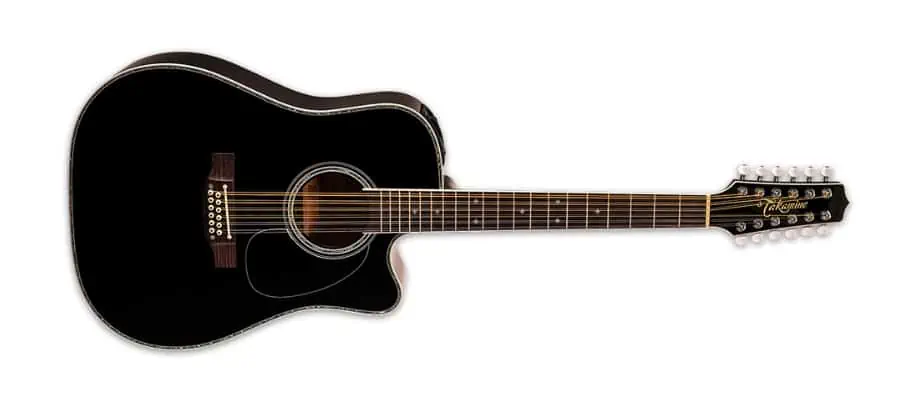

Bruce Springsteen also has a Takamine EF381C 12-String Guitar for his acoustic songs. He uses this guitar mainly on the stage.
Electric Guitars
Fender American Vintage ’52 Telecaster
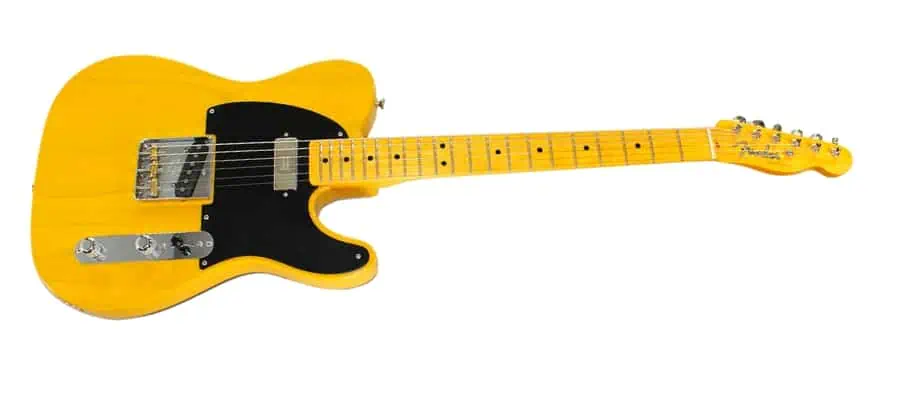
When talking about Bruce Springsteen, the first guitar to come to mind is his iconic Fender American Vintage ’52 Telecaster. Although he experimented with different guitars throughout his career, his main guitar of choice was always the Fender American Vintage ’52 Telecaster. He used it on the stage as well as in the studio for most of his iconic recordings, as he explains in the interview.
Fender Esquire
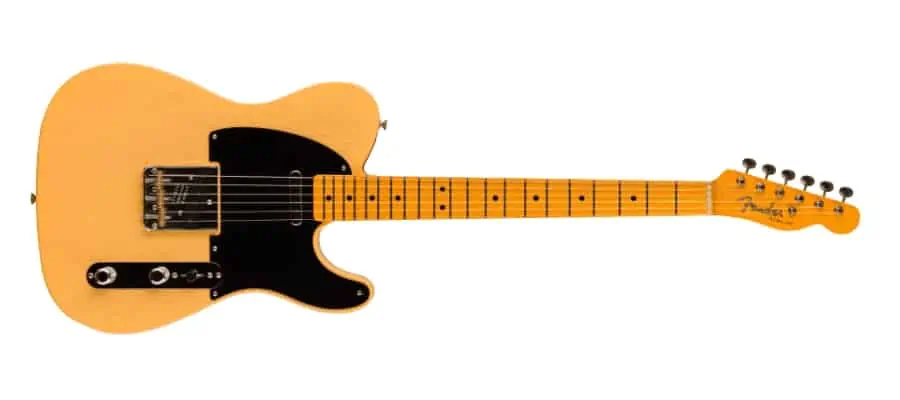
Bruce Springsteen’s ’50s Fender Esquire is one of the most legendary and iconic guitars ever. Along with his Vintage Fender Telecaster, this is the guitar he used most frequently on the stage and in the studio. This maple-neck Esquire will always be linked with him.
Gretsch Country Gentleman
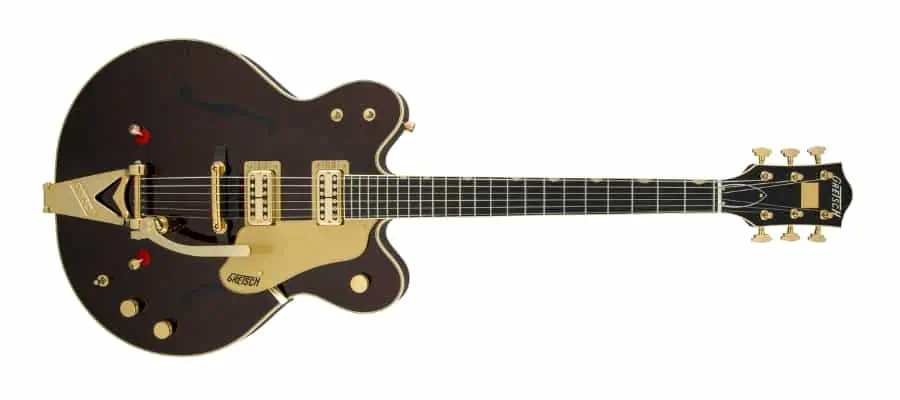

At the beginning era of his career, Bruce Springsteen used a Gretsch Country Gentleman in his live performances for a short while.
Gibson Les Paul Junior
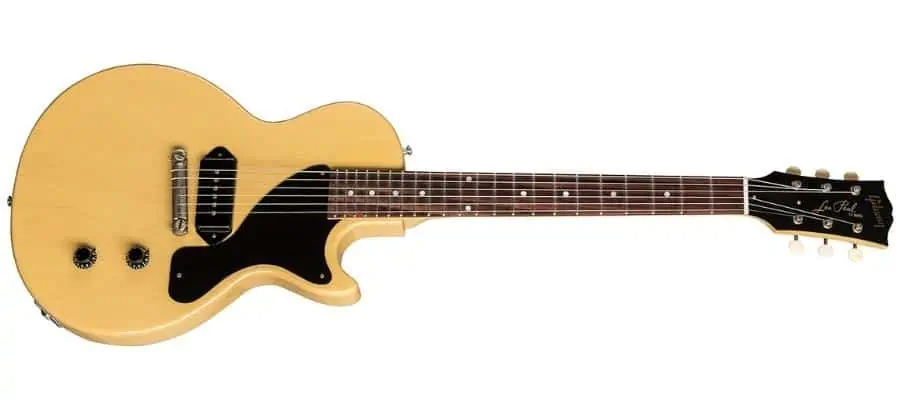

One of the guitars Bruce Springsteen tried out in the latter years of his career was the classic Gibson Les Paul Junior. The iconic guitar with a single pickup gave him a more classic rock sound that he liked for some of his songs.
Danelectro 56 U2
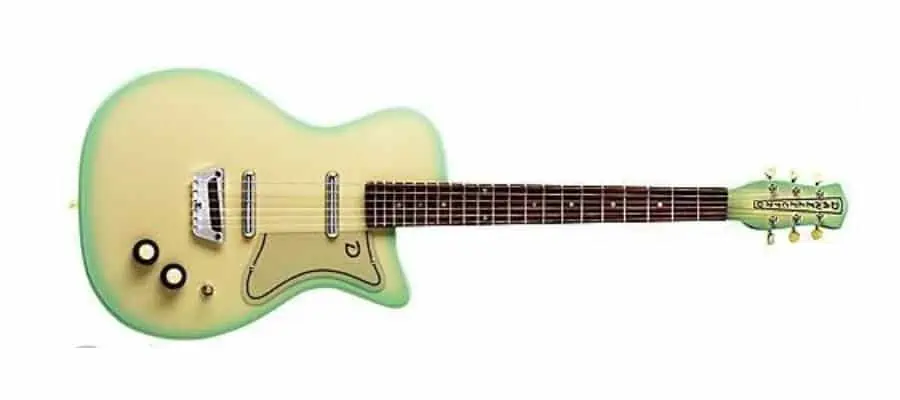
Another guitar Springsteen used for some shows was Danelectro 56 U2 during the ’90s. He used the guitar a few times on the stage.
Fender American Standard Stratocaster
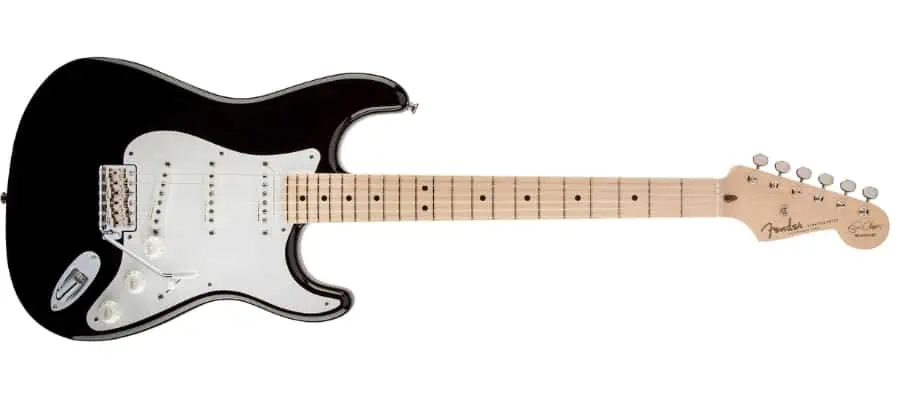
While it is not one of Bruce Springsteen’s favorite guitars, Fender American Standard Stratocaster was one of the instruments he used a few times. Not many people know it, but Bruce tried a Strat a few times on the stage as he has one Strat in his guitar arsenal.
Gibson ES-335 12-String Hollowbody
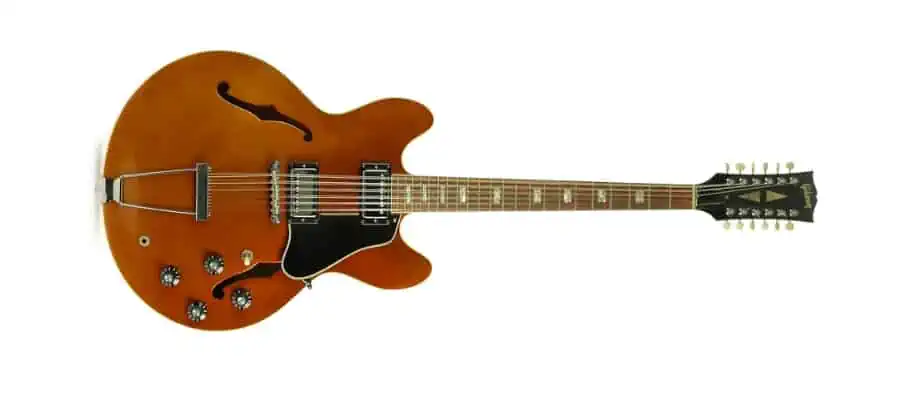
Springsteen likes to use 12-string guitars on the stage and in the studio. He has some 12-string electric guitars in his collection, and the most-used one is the Gibson ES-335 12-String Hollowbody.
Fender 1963 Telecaster Custom
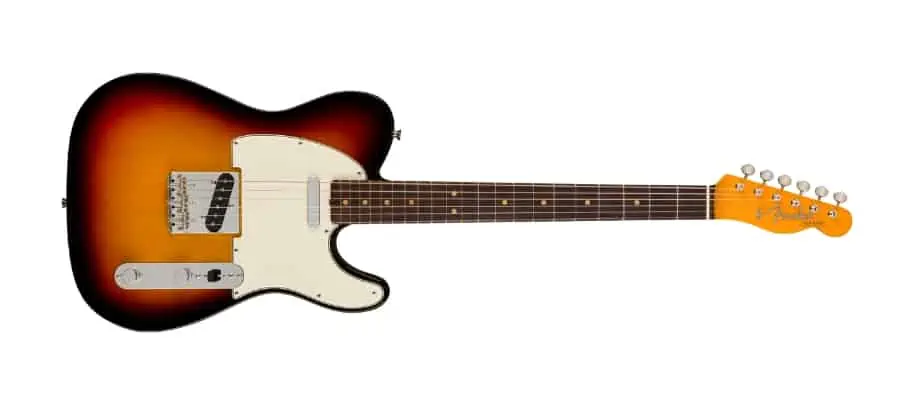

One of his favorite Telecasters, Bruce Springsteen, is the Fender 1963 Telecaster Custom guitar, which he used almost all throughout his career. It is another amazing guitar that is heavily linked with the artist.
Microphones
Shure SM57
As Bruce Springsteen’s audio engineer states, Bruce used a Shure SM57 in his own personal studio. He used the mic for many recordings and demos, as well as live performances.
Neumann U47 FET
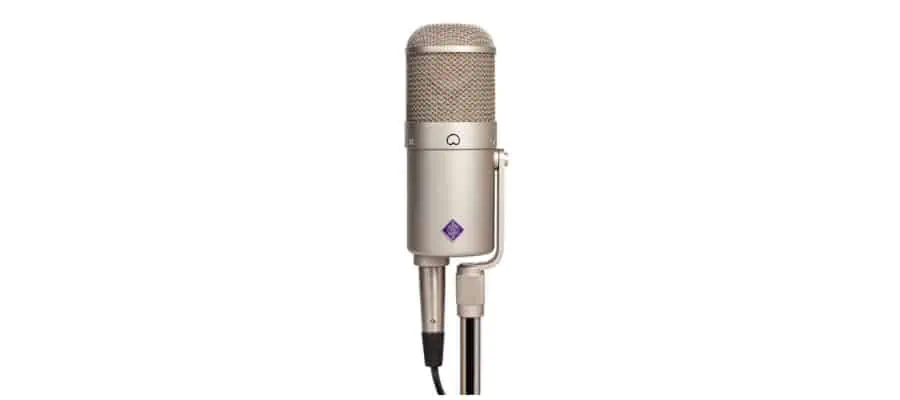
Bruce also used a Neumann U47 FET in his studio, as shown on the official website of Neumann.
Shure SM7
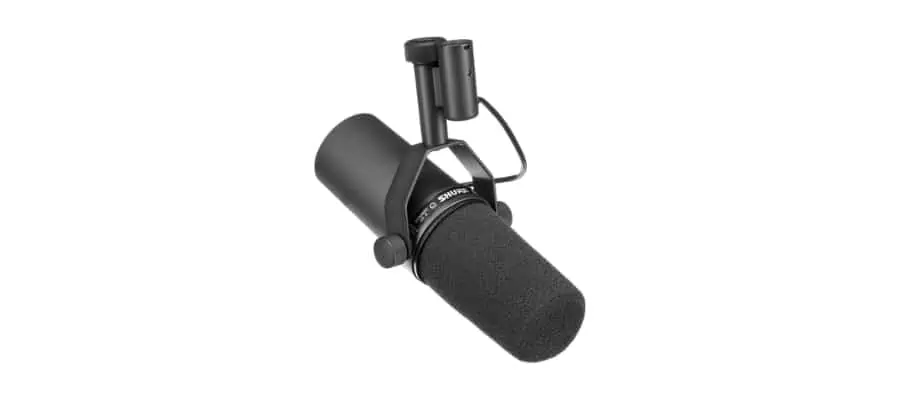
Most of the iconic songs of Bruce Springsteen were recorded with a Shure SM7.
Shure SM58
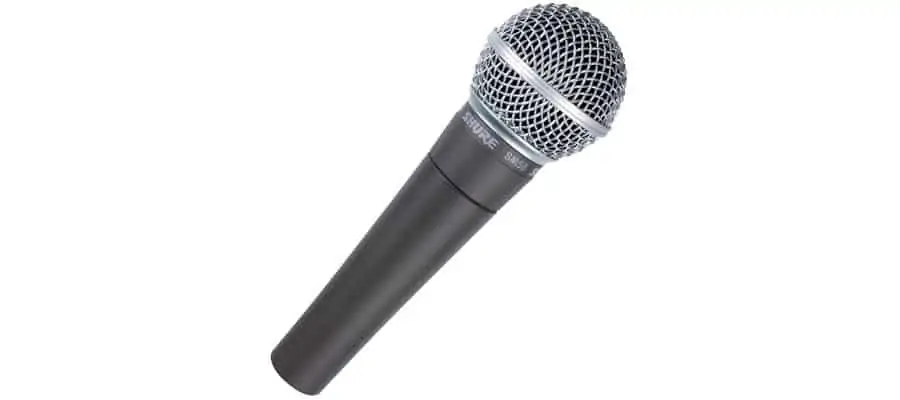
Shure SM58 is another studio regular of Bruce Springsteen, which he used quite often on the stage and in his recordings.
Amps
Mesa Boogie Dual Rectifier Trem-O-Verb Head
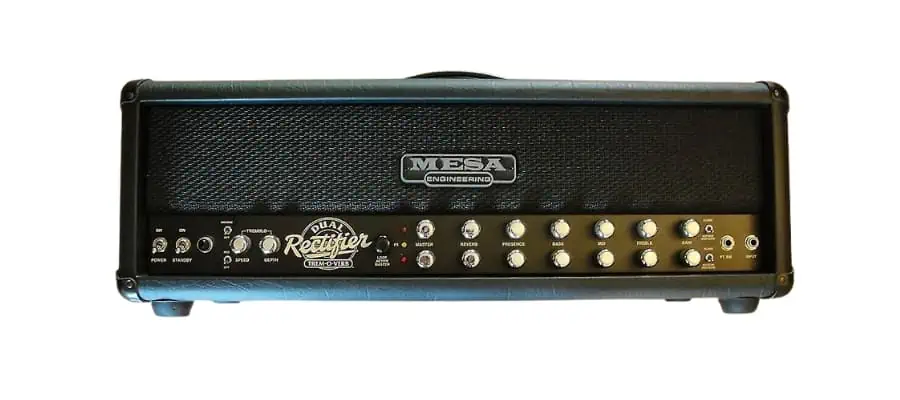
Bruce Springsteen uses a Mesa Boogie Dual Rectifier Trem-O-Verb Head in his shows, as shown on the website of Mesa Boogie.
Fender Bassman
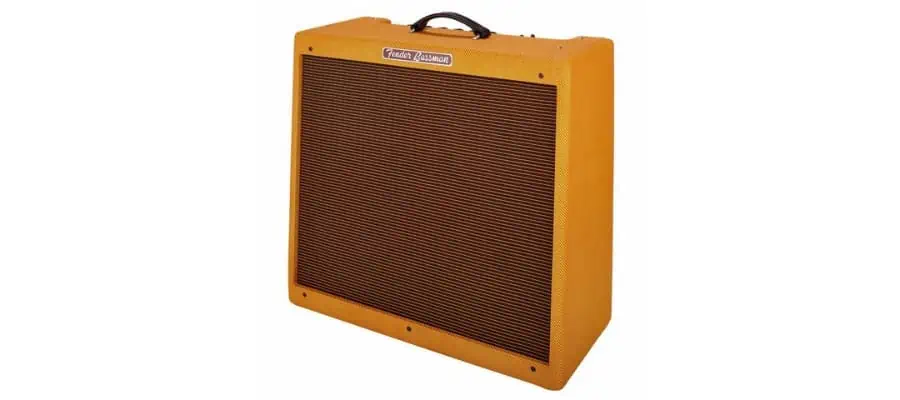
Fender 59 Bassman LTD Guitar Amplifier is the favorite guitar amp of Bruce Springsteen, to which he stayed loyal throughout his career. He used it on many iconic recordings as well as his shows. Between 1974 and 1981, Bruce Springsteen shows were created with the combination of Peavey “Vintage 410” Amp and Fender ’59 Bassman.
Fender Twin Reverb
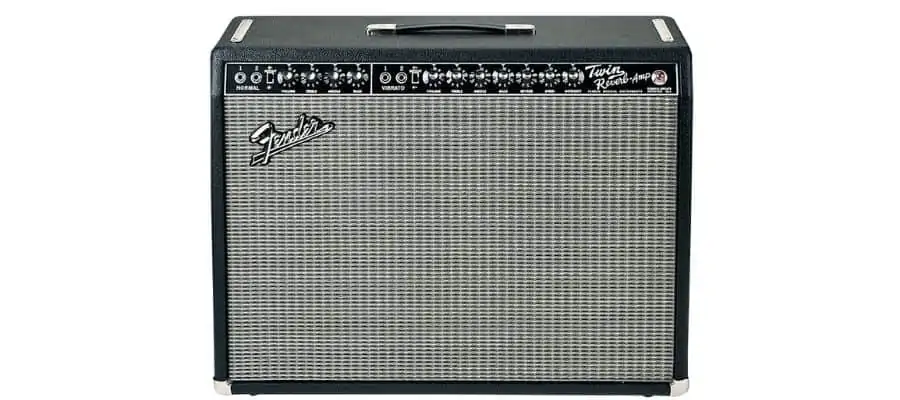
One of the favorite amps of Bruce Springsteen is the Fender Twin Reverb, which he used in the studio and on the stage since the first days of his music career.
Peavey “Vintage 410” Amp
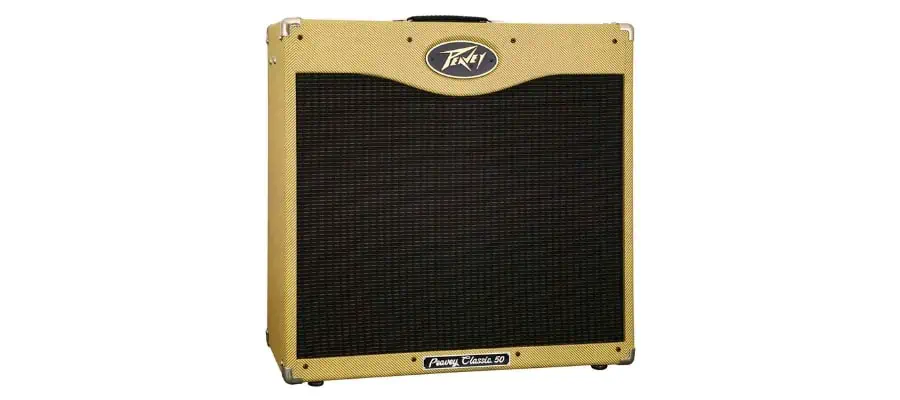
Peavey “Vintage 410” Amp was used by Bruce Springsteen in live performances between 1974 and 1981. He used it in combination with the Bassman.
Mesa/Boogie Mark IIC+ Head
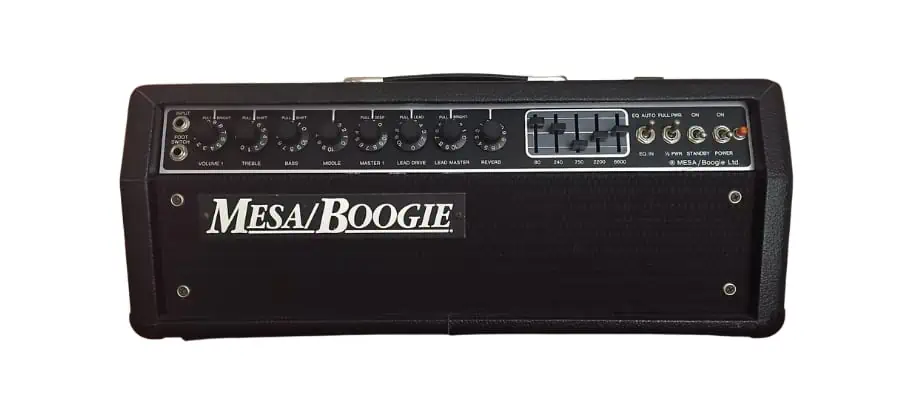
As shown on the official webpage of Mesa Boogies, Bruce Springsteen used a Mesa/Boogie Mark IIC+ Head for over 20 years before he switched them with Electra-Dyne Heads.
Mesa/Boogie Electra-Dyne Head
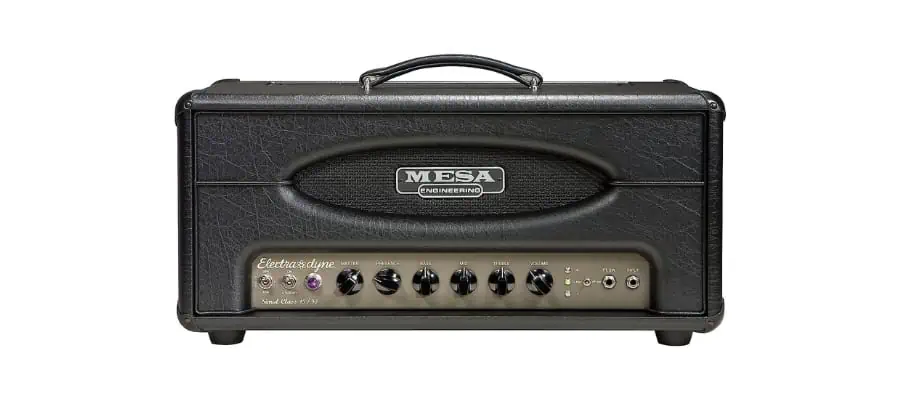
In the last part of his career, Bruce started using Mesa/Boogie Electra-Dyne Head instead of the Mesa/Boogie Mark IIC+ Head.
Vox AC30
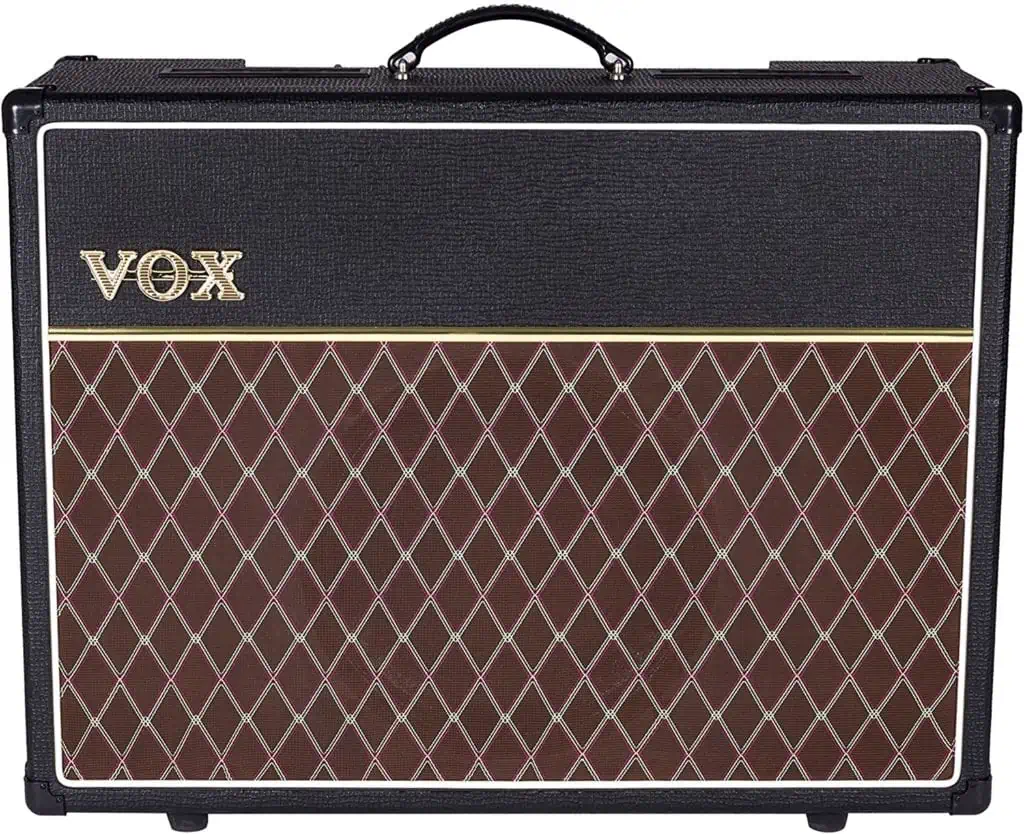
Another great amp Bruce Springsteen has in his studio is the Vox AC30. He likes the British sound of the amp for creating different sounds.
Cabs
Marshall JCM800 Cabinet 4×12″
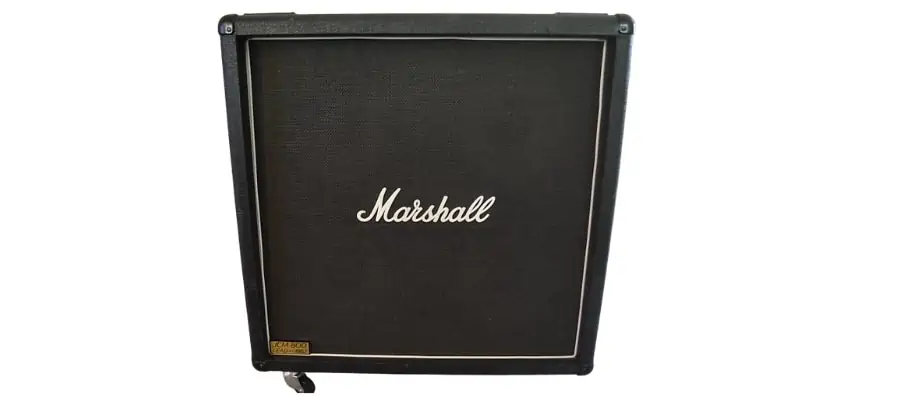
In most of his shows, you can see the Marshall JCM800 Cabinet 4×12″ cabinets behind Bruce Springsteen.
Effect Pedals
Boss BF-3 Flanger
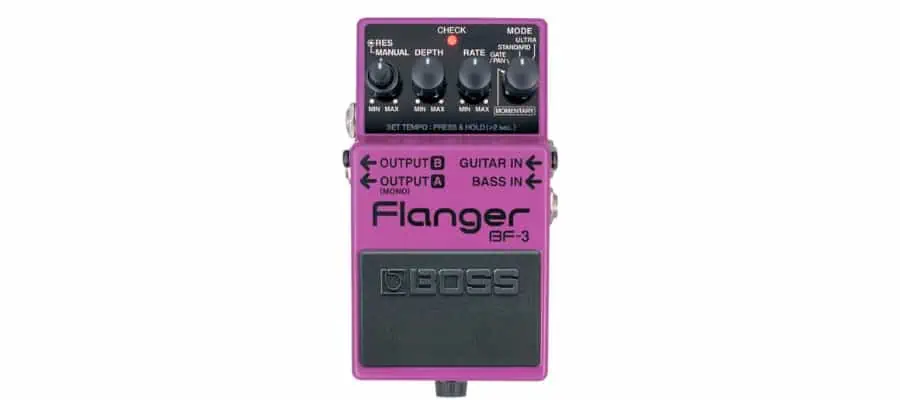
Bruce Springsteen likes the Boss pedals and builds his pedalboard with many of them. One of the most important ones is the Boss BF-3 Flanger, which he often uses in his songs.

Boss SD-1 Super Overdrive
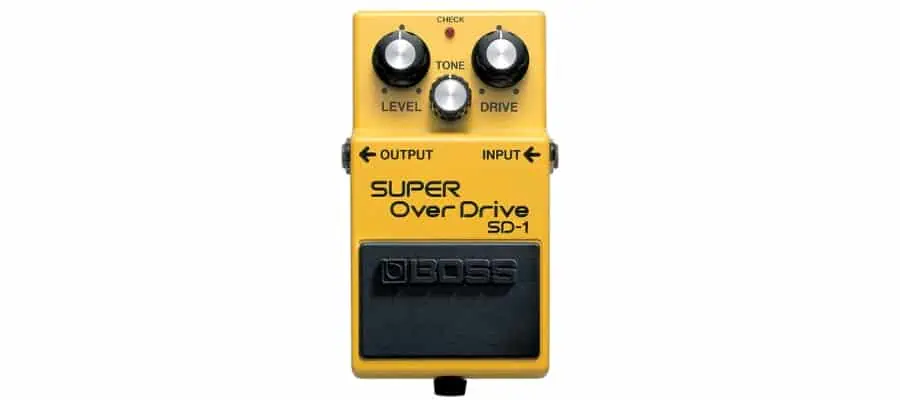
Springsteen tried many different overdrive pedals to get his sound, but the most regular is the Boss SD-1 Super Overdrive.

Boss DD-3 Digital Delay
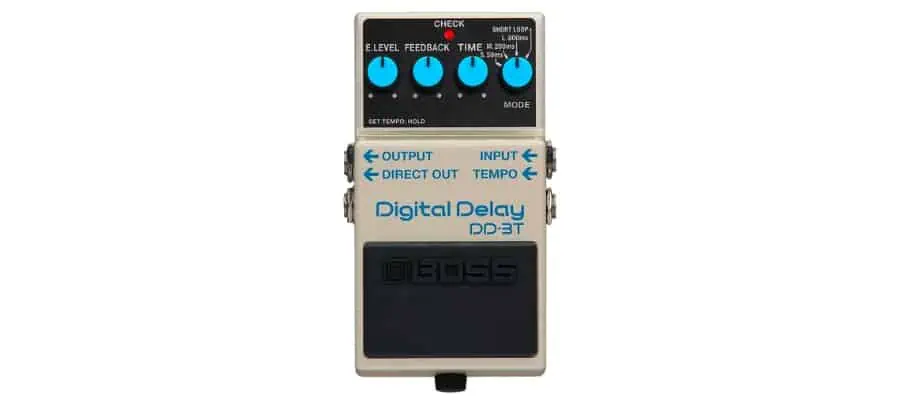
For the delay effects he uses sometimes, Bruce prefers the classic Boss DD-3 Digital Delay pedal.

Fulltone Full-Drive2 Mosfet
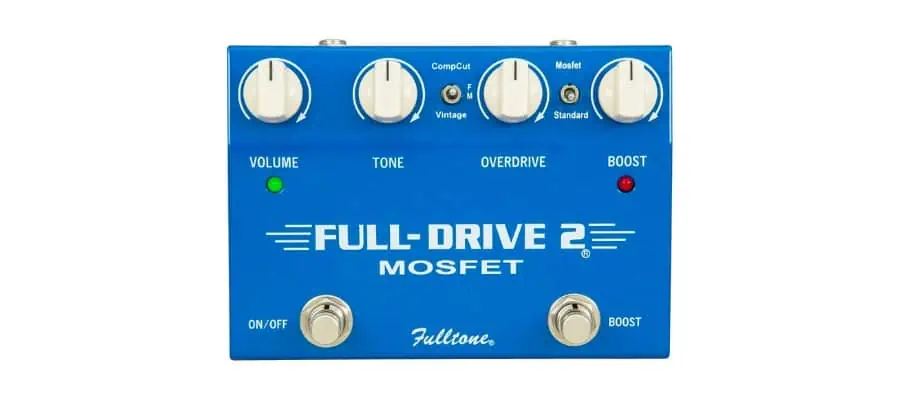
Another overdrive pedal Bruce used for a while during the mid-era of his career was the Fulltone Full-Drive2 Mosfet. He mainly used it on the stage.

Boss RT-20 Rotary Ensemble Pedal
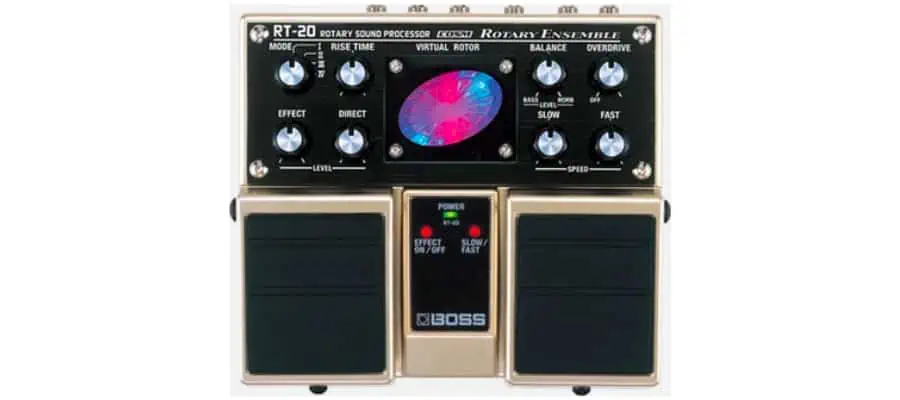
Bruce likes the Leslie rotary speaker effects in the studio and on the stage. For this effect, he likes to use the Boss RT-20 Rotary Ensemble Pedal.

Fulltone GT-500 Booster/Distortion
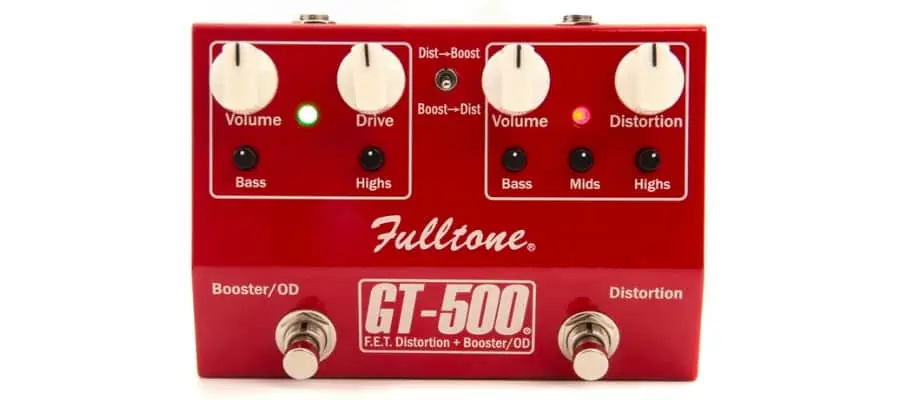
When Bruce wants a more rock-heavy sound, he goes for the Fulltone GT-500 Booster/Distortion pedal on the stage.

Boss NS-2 Noise Suppressor
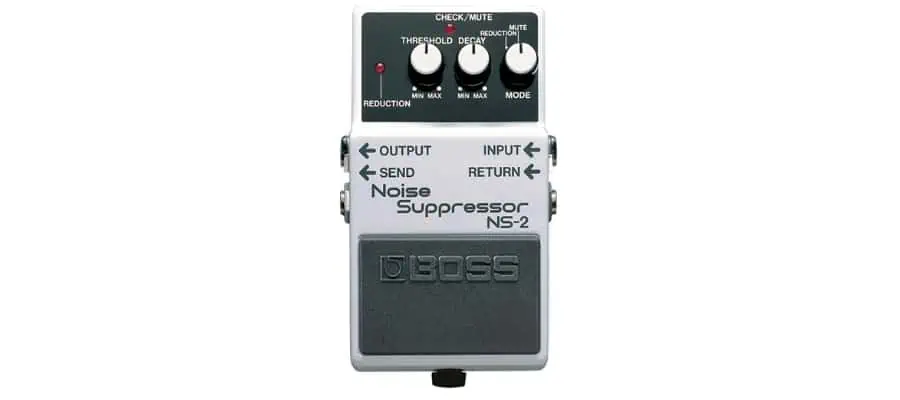
For the noise gate pedal, Bruce likes to have a Boss NS-2 Noise Suppressor in his setup to prevent unwanted noises in his signal chain.

93 Prime Time Digital Delay Processor
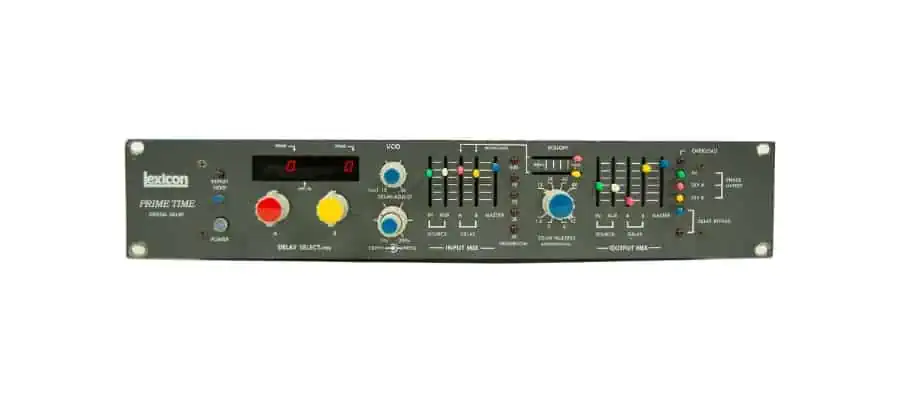
In his studio, Bruce Springsteen likes to use a 93 Prime Time Digital Delay Processor to create his delay effects in the recordings.

Guitar Accessories
Shubb S1 Deluxe Guitar Capo
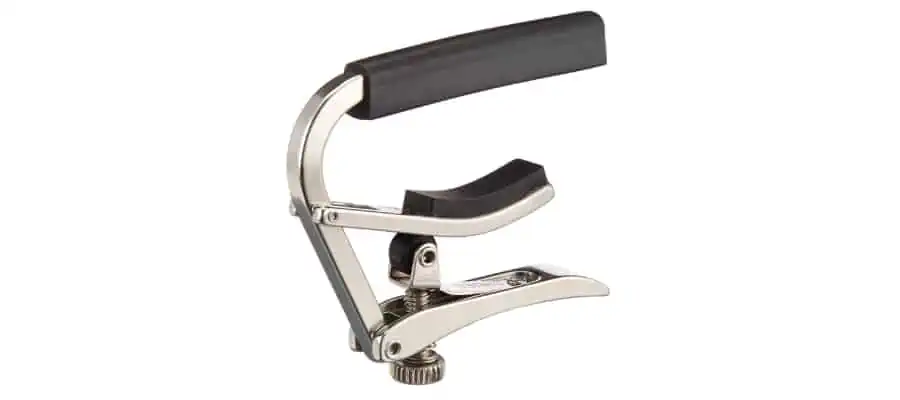
As Bruce Springsteen uses the capo quite often on the stage, he has a high-quality Shubb S1 Deluxe Guitar Capo in his setup.
Kyser Quick-Change Capo
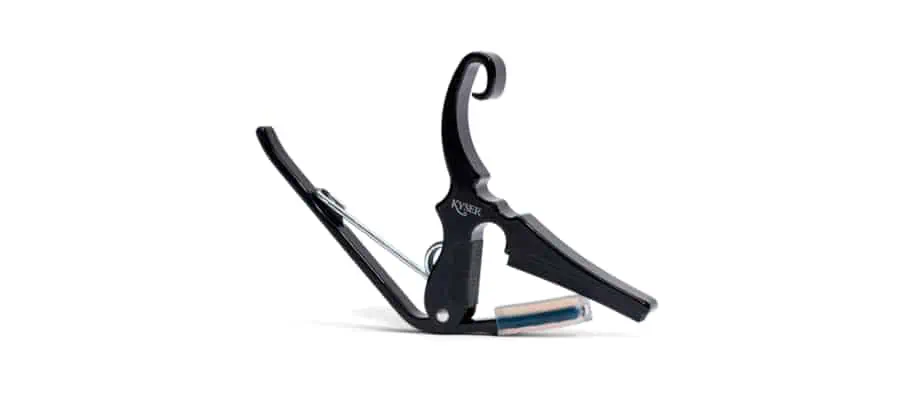
Another capo Bruce likes to use is the Kyser Quick-Change Capo. It is quite a handy capo as it makes changing the fret quite easier.
Teac TASCAM 144 Portastudio
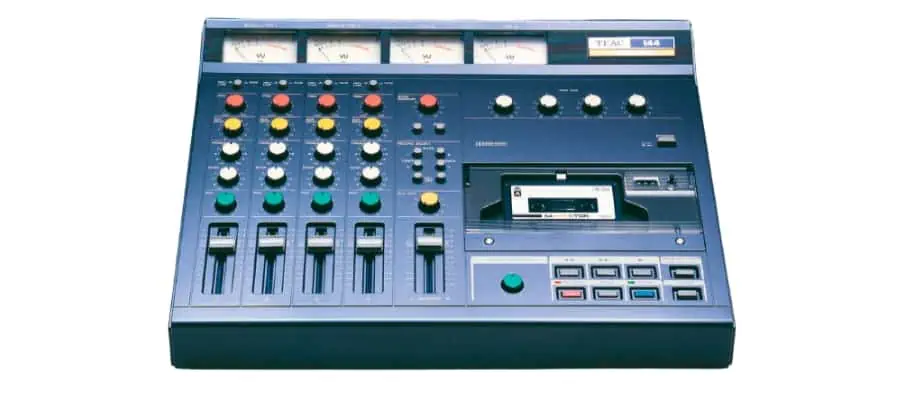
Another member of Bruce Springsteen’s studio is the Teac TASCAM 144 Portastudio. His classic Nebraska was recorded on the Teac TASCAM 144 Portastudio.
What Is Special About Bruce Springsteen’s Guitar Tone?
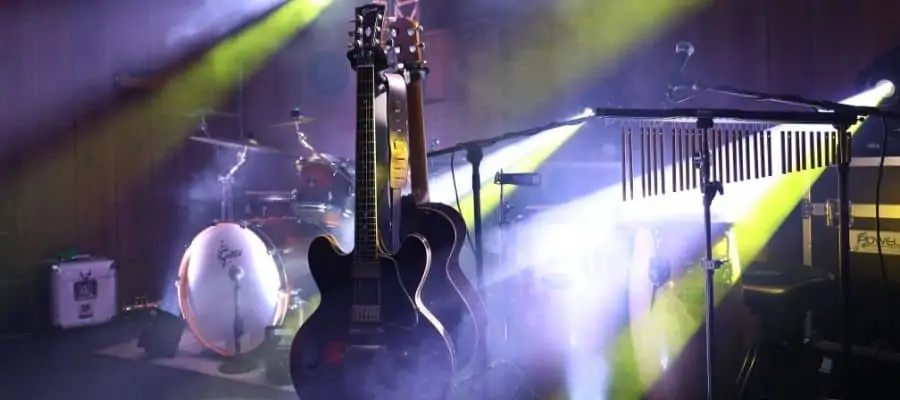
Bruce Springsteen has many great guitar tones that can be heard in many of his famous recordings, such as Darkness, Born To Run, and Born In The USA. His tones always have the Telecaster twang with specific effects designed differently for each song. The talent of Bruce Springsteen is finding and creating a unique tone for every different song he has.
Bruce’s tones are always quite defined and articulated. For example, in Born To Run, he has a clean-slightly overdriven sound with a nice bite and twang. He likes to add modulation or time-based effects a lot without overwhelming the dry signal to add the spices to his tone and get things less exciting. This way, he creates unique tones for different tunes.
For example, in Tunnel Of Love, again, he goes for a slightly overdriven-clean guitar tone but this time with a bit of delay and flanger effects. Another example is the Glory Days song, in which he goes with a more reverb-soaked tone with a good rock-heavy sound.
In general, Bruce’s tones are quite bright, has a nice balance of different kinds of effects, and always sound quite vintage. But the sound you hear from his guitar is pretty defined and articulated. It is never messy or chaotic but rather smooth and nicely balanced.
How To Sound Like Bruce Springsteen?
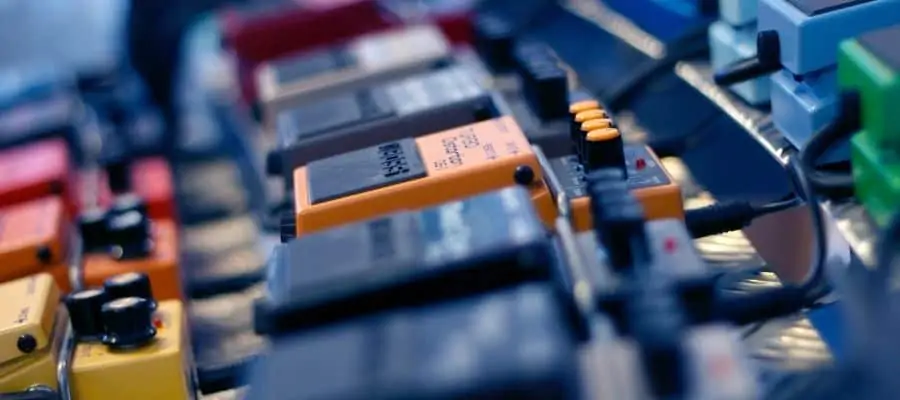
As Bruce Springsteen is quite flexible regarding his guitar tones, he uses different effects and settings for different songs. So, I will explain his tone in 3 of his most famous songs, including Born To Run, I’m On Fire, and Glory Days.
Before starting, while all songs feature quite different-sounding guitars, there are things in common. Bruce Springsteen likes to have his amp pretty loud to allow the tube amps to naturally break up with the dynamics of his playing. Most of his tone comes from the guitar-amp combination, while the last steps of the make-up of the tone are created by the effect pedals, which makes him sound different in different songs.
For a tone like in the song Born To Run, you will need two pedals, a clean booster, and a tremolo effect pedal. The tremolo effect should be just slightly there, while the clean boost will help your tone to stand out and break up the amp easier. The top end of the EQ should be rolled off slightly to get the guitar better in the mix.
If you want the clean and spacious tone of Bruce Springsteen, like in the song I’m On Fire, you will need to add a vintage-style delay pedal to the previous setup. Set the delay to very low and fast so that you can add the ambient space to the tone but not the repeats itself. So you won’t hear a defined repeat, but you will get the space it creates, which gives character to the tone. For the EQ side, set everything flat around -2 dB and push the highs to around +2.5 dB to get the crispiness and extra air to the sound.
And for a tone like in the tune Glory Days, you will need to create a reverb-soaked, big stadium rock guitar tone. For this one, you will need to use a good amount of reverb with a reverb pedal or from your amp. The clean boost should be there to break up the amp, and the EQ should be flat with the high-ends slightly above the mid-ground, and depending on your gear, you can also add a bit more mid-frequencies. This way, you can create the wall of sound he is famous for.
Most of Bruce’s tone comes from the Tele-guitar and Fender-Bassman or Twin Reverb amp combination. The character of the song is given by the effect pedals for each individual song, but all of them sound quite punchy and loud, as he is known for his wall of sound.
So, playing dynamics and style plays a big role here too. To sound like Bruce, you have to understand his approach to the instrument and replicate his style a bit. He is one of the best rhythm guitarists ever, and what makes his playing style unique is his dynamics.
He likes to play energetic strumming patterns that give the tunes a lively, anthemic quality. He plays a lot with the rhythms creating different rhythmic variations, incorporating syncopation, accents, and subtle nuances. He also creates the contrast by using fingerpicking and changing to strumming, so you have to master the fingerpicking technique to really get close to his playing. When he gets more rocky ranges, he likes to use power chords and palm-muting, which are the essentials of rock guitar. Another important part is the Barre Chords and Suspended Chords that Bruce uses frequently. So, you should master these to play his songs.
Bruce Springsteen Guitar Rig Examples
Budget
Guitar – Squier Affinity Series Telecaster Electric Guitar
- Alder body with gloss polyurethane finish
- Maple neck with 9.5 in radius maple fingerboard with 21 medium jumbo frets
- 2 Single-Coil Pickups. Body Finish : Polyurethane
- 6-Saddle Top-Load Bridge
Amp – Positive Grid Spark
- Smart Jam learns your style and feel, generating authentic bass and drums...
- Access to 50,000+ amp-and-FX presets on ToneCloud, powered by...
- Import your music from Spotify, Apple Music or YouTube and Spark’s smart...
- Powerhouse 40 Watt combo includes onboard tone stack controls, effects,...
To get the Bruce Springsteen sound without breaking the bank, you can go for a basic telecaster guitar like Squier Affinity Series Telecaster Electric Guitar and a budget modeling amp like Positive Grid Spark. With the right settings, you can get pretty close to the iconic Bruce Springsteen guitar tones.
Mid-Range
Guitar – Fender Player Telecaster
- Alder Body with gloss finish
- Two player Series single-coil Telecaster pickups
- Modern C"-Shaped neck profile
- 9. 5"-Radius Fingerboard
Amp – Vox AC15
- Classic British tube amp with 10 watts of power for rich, authentic tones
- Equipped with EL84 power tubes and 12AX7 preamp tubes for classic VOX sound
- Custom 10" Celestion VX10 speaker for powerful, clear sound projection
- Features both normal and Top Boost channels for versatile tone shaping
Effect Pedal – BOSS BF-3 Flanger
- Flanger Pedal f Guitar Bass with Momentary Mode
- Ultra Gain/Pan Modes
- Tap Tempo
- Two new modes (Ultra and Gate/Pan) create stereo flanging with incredible...
Effect Pedal – Boss SD-1 Super Overdrive
- Overdrive Pedal f Electric Guitar
- Legendary BOSS overdrive pedal with genre-defining sound and feel
- Stacks well with boost, overdrive, and distortion pedals
- Unique asymmetrical clipping circuit produces tube-like overdrive...
If you have a mid-range budget, you can go for a better Telecaster like the made-in-Mexico Fender Player Telecaster along with a VOX AC15, which both are more affordable versions of the actual gear Bruce Springsteen uses. With two pedals, BOSS BF-3 Flanger and Boss SD-1 Super Overdrive, you can create most of the tones Springsteen uses pretty accurately.
High-End
Guitar – Fender American Vintage Telecaster
- Premium Ash Body
- One-piece U-shaped maple neck and 7.25"-radius fingerboard
- Two American Vintage Tele Single-Coil Pickups
- Original Tele circuit with three-position switch
Amp – Fender Bassman
- 4 inputs and 2 channels can be blended to produce an expanded array of...
- Solid finger-jointed pine cabinet and 4-10" Jensen P-10R, 8 Ohm Speakers...
- Internal bias pot makes it easier to experiment with various output tubes.
- Fitted cover included.
Effect Pedal – BOSS BF-3 Flanger
- Flanger Pedal f Guitar Bass with Momentary Mode
- Ultra Gain/Pan Modes
- Tap Tempo
- Two new modes (Ultra and Gate/Pan) create stereo flanging with incredible...
Effect Pedal – Boss SD-1 Super Overdrive
- Overdrive Pedal f Electric Guitar
- Legendary BOSS overdrive pedal with genre-defining sound and feel
- Stacks well with boost, overdrive, and distortion pedals
- Unique asymmetrical clipping circuit produces tube-like overdrive...
Effect Pedal – Boss RT-20 Rotary Ensemble Pedal
- Authentic rotary speaker sounds by COSM technology
- Slow/Fast transition time is adjustable from gradual to rapid change;...
- Onboard Overdrive effects
- Adjustable mix balance between Treble Rotor and Bass Rotor
Effect Pedal – Boss NS-2 Noise Suppressor
- Noise Suppress/Noise Gate Guitar Pedal
- Compact noise suppression pedal for eliminating noise and hum in guitar and...
- Unique noise detection circuit preserves the natural attack and envelope of...
- Threshold and Decay knobs allow for shaping the elimination/suppression as...
Effect Pedal – Boss DD-3 Digital Delay
- Compact delay pedal with superb BOSS sound quality
- Provides 3 delay time modes and a Delay Time control for quick adjustment...
- Hold function repeats delay sound indefinitely for interesting effects
- BOSS 5-year warranty
For relaxed budgets, I recommend going with the actual gear of Bruce Springsteen. So, you can have a Fender American Vintage Telecaster and Fender Bassman, which is the real combination Springsteen uses in most of his recordings and shows. For the effects side, building a Boss effects pedal setup like Springsteen will give you the versatility to reach any tone he creates. You should go with a BOSS BF-3 Flanger, a Boss SD-1 Super Overdrive, a Boss RT-20 Rotary Ensemble Pedal, a Boss NS-2 Noise Suppressor, and a Boss DD-3 Digital Delay pedal.
Conclusion
So, in short, Bruce Springsteen is one of the most influential names in the music industry. The veteran singer and guitarist has a unique sound, style, voice, and gear combination. He has many guitars, amps, effect pedals, and gear, as he experimented a lot during his career.
But, his regular gear consists of a Telecaster version, a Fender Twin Reverb amp, and Boss effect pedals. He is known for his classic-rock guitar tones with hints of blues and country here and there. His pedals are mostly handmade or customized Boss pedals that he relies on to create different effects. His bold tones, legendary guitar melodies, and iconic voice have defined the colors of rock and roll and will continue to do so for many more years, as it seems.
If you found this article useful, you may want to save this pin below to your Guitar board.
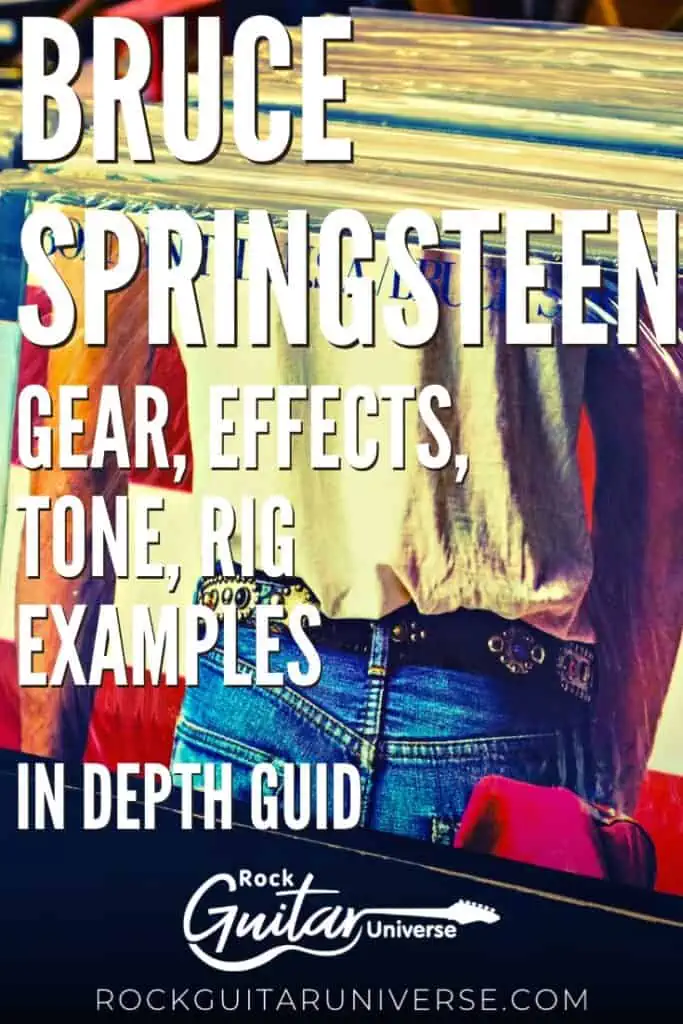
Last update on 2025-07-12 / Affiliate links / Images from Amazon Product Advertising API
Recent Posts
Some guitarists insist on buying an expensive amplifier with their electric guitar. They assume that this is a must for every type of guitarist out there. However, in some situations, this isn’t...
Top 50 Free Realistic Guitar VST Plugins With Sound Examples
As technology has rapidly advanced in the recent decade, computers are stealing more and more roles from physical musical instruments and accessories. Nowadays, you do not need expensive amps,...

